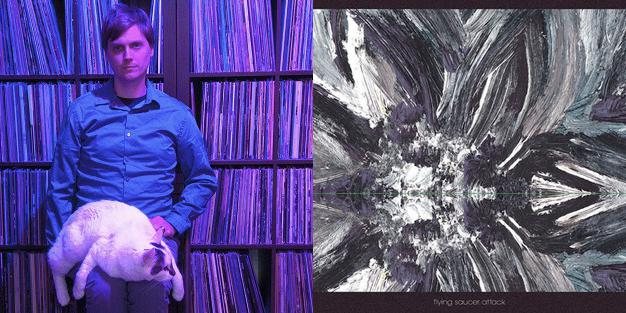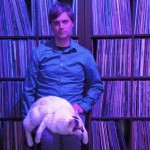By virtue of its existence, a new Flying Saucer Attack album in 2015 is a subversion of expectation. Absent since 2000, the band (ostensibly the solo project of David Pearce since founding member Rachel Brook’s departure in 1996) seemed to have drifted away for good, trapped in some nether region between “legendary” and “historical footnote,” revered by aficionados of low-fidelity, distortion-drenched earworm melodies yet decreasingly noted as a point of reference year by year.
So it came as some surprise when a new Flying Saucer Attack album was announced earlier this summer. Its arrival feels somehow unceremonious in an age when bands whose heyday came in the ’90s seem to be reforming at an exponentially growing rate, utilizing nostalgia to realize the glory or fortunes that may have eluded them during their first run. Pearce doesn’t seem to have done a single interview for the album, allowing the music to convey its own meaning on its own terms.
Instrumental music has the unique power to tap into emotions that words might not be able to convey adequately, burrowing into a subconscious part of the mind and evoking feelings that might never be voiced. It’s tempting to boil down pieces of music to capital letter emotions: the Hope of Godspeed You! Black Emperor’s Lift Your Skinny Fists Like Antennas to Heaven (2000), the Nostalgia of Erik Satie’s Gymnopédies (1888), the Sorrow of Bohren & der Club of Gore’s Dolores (2008); but the truth is far more complex and nuanced. Every piece of music is a complicated web of emotion, an intersection of the composer’s intent and the (potentially contradictory) interpretations of its listeners, each of whom carries a highly personalized take on it. Loving an instrumental work can be a very lonely feeling — though it may speak to us on some level beyond words, what draws us to music is the feeling of human connection, and without the human voice acting as a catalyst for that connection, we are left alone with our own emotional responses.
In some respects, Flying Saucer Attack has always challenged that connection. The group originated in an era when lo-fi was more than an aesthetic, it was a movement — with bands as diverse and divisive as Guided by Voices, Luxurious Bags, Bardo Pond and the Dead C creating music at a prolific clip, enabled by cheap home-recording equipment that liberated them from the necessity of racking up expensive studio costs. Though the aforementioned groups buried their music in a crust of tape-deck scuzz, all brought an ear for melody to one degree or another, be it the amateur arena anthems of GbV or the fever-dream noise-drawl of Dead C. In the ’90s, FSA was no exception. Songs such as “My Dreaming Hill,” from 1994’s self-titled debut, capture a sense of longing that is almost panoramic in scope. Obscured by a haze of treble-tweaked fuzz, voice distant behind walls of carefully controlled feedback, it feels a bit like reading a diary that’s been doused in water, the words blurred and illegible.
And it might be best to try to understand Instrumentals 2015 in that context. Mysterious and unexpected, dropped upon us without context or explanation, the songs are simply titled as “Instrumental” 1 through 15; Pearce has left us with the music as our only guide. The sense of longing that seemed so present in FSA’s most melodic works has been replaced with desolation. Most of the tracks are solo guitar pieces that teeter between carefully plucked notes and rich washes of arrhythmic tone, most often drenched in undulating analog echo and dense reverb that sometimes recall Neil Young’s soundtrack for the Jim Jarmusch film Dead Man (1996). The press release suggests an “impressionistic narrative” — maybe it’s in the way Instrumentals 2015 charts a slow and steady course, slowly shifting from ghostly space and lonely minor key rambling to expansive melodic washes as the album sways into its final moments and then quietly drifts away like a raft following the current.
Sometimes it’s tempting to approach abstract music as pure sound, not thinking of it in terms of the context of its creation. But something interesting happens near the end of “Instrumental 3”: an out-of-key note disrupts the balance, seeming to suggest that the whole exercise is unmediated or unrehearsed. And in this moment the album feels most visceral and expressive, the absence of vocal connection and the seeming obscurity of the work betrayed by the sudden image of Pearce crouched alone in front of a tape deck and a slew of effects pedals, guitar in hand, wringing every drop of emotion he can from the instrument. It is a moment of uncalculated beauty and humanity, such as we were always looking for.









